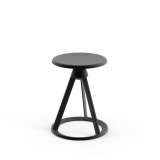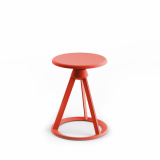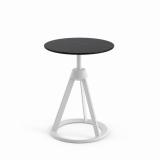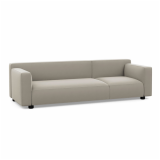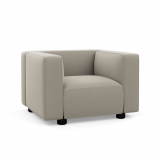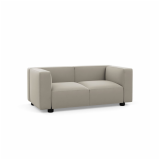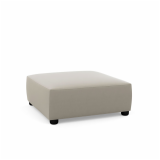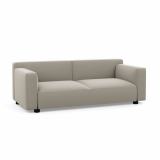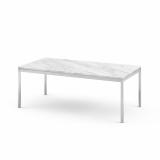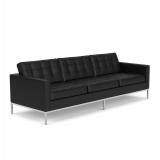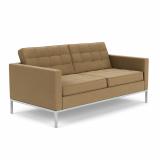Knoll is proud to continue to grow Barber Osgerby's collection for KnollStudio. The Lounge Collection, which made its debut in 2013, comprised a series of architectural sofas and lounge chairs, born out of reference to Florence Knoll's iconic sofa. The recently added Piton™ Stool and Piton™ Side Table, designed by Edward Barber and Jay Osgerby, continues the firm's relaxed, contemporary attitude toward interior design, adding the option of fixed or adjustable-height stools and side tables to complement their other designs for the Knoll catalogue.
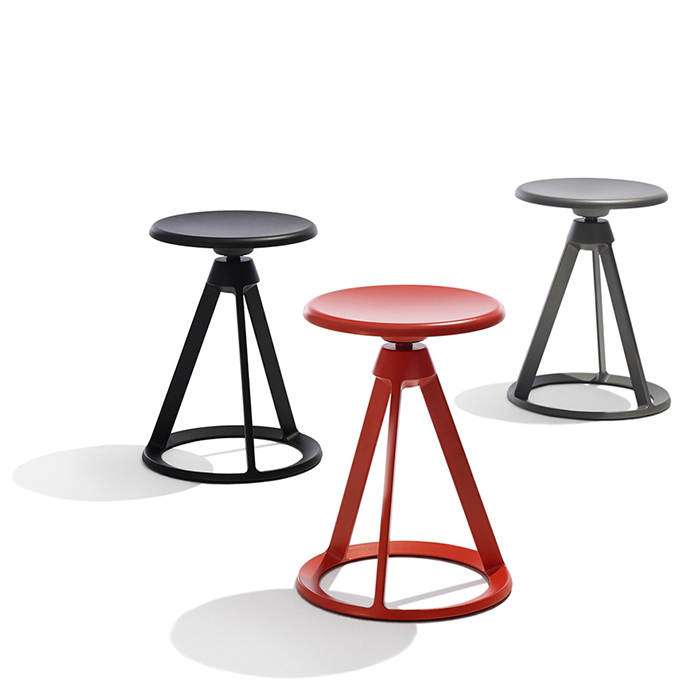
Barber Osgerby's Piton™ Adjustable Height Stool for Knoll, 2015. Photograph by Knoll.
Taking cues from the aesthetic principles of modernism and pragmatic considerations of the height-adjustable stools manufactured for sewing professionals in the mid-century era, the Piton™ Adjustable Height Stool is equally well suited for industrial tasks and domestic settings. The stool’s geometric, elementary framework is an interpretation of the familiar tripod structure; the conical base, unified by two concentric rings, guards against the potential for imbalance caused by an uneven floor, equally distributing weight so as to counteract the tendency of the stool's three-legged counterpart to wobble. The die-cast material is equally resilient to abrasions and dents, made using the same industrial-strength aluminum that forms the foot of the sofas in the Barber Osgerby Lounge Collection. Available in a number of color configurations, the stool’s base can be paired with either teak or ebonized-ash seat, as well as painted or polished aluminum.
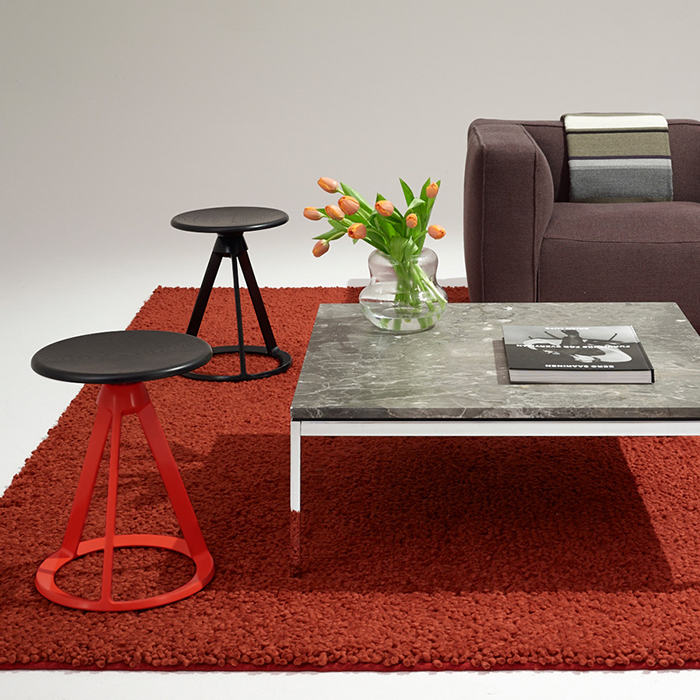
“That's the goal, really, to try and innovate. The more open you are to other influences from engineers and technicians within the company, the better the product will be in the end.”
—Edward Barber
Piton™ Adjustable Height Stools and Florence Knoll Coffee Table. Photograph by Knoll.
Internationally acclaimed designers Edward Barber and Jay Osgerby met while studying for their master’s degrees at The Royal College of Art in London. Upon graduating in 1996, the two decided to open a design studio together and moved to West London to get to work on one of their first designs, the Loop Table. Having studied architecture, the two began the process by bending and manipulating the same white index cards they had used in their model making classes. When it came time to prototype their designs, they found sheet metal and plywood to be most conducive to creating the forms that resulted from their experiments.
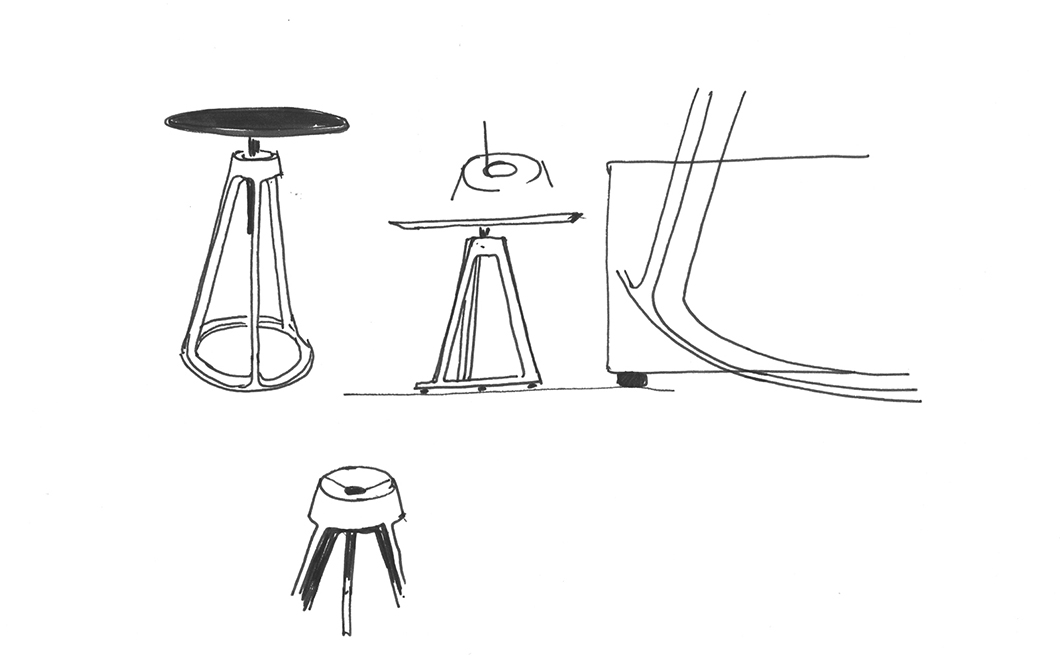
Sketches of Barber Osgerby's Piton™ Side Table for Knoll, 2015. Courtesy of Barber Osgerby.
The firm’s early work is characterized by its display of formal and technical innovation, showcasing the designers’ virtuosic command of the craft. Their research-driven approach is equally informed by material and technological considerations: “That’s the ultimate goal, really, to try and innovate. The more open you are to other influences from engineers and technicians within the company, the better the product will be in the end. If you can tailor their experience with your wishes, then you are going to end up with the best possible result."
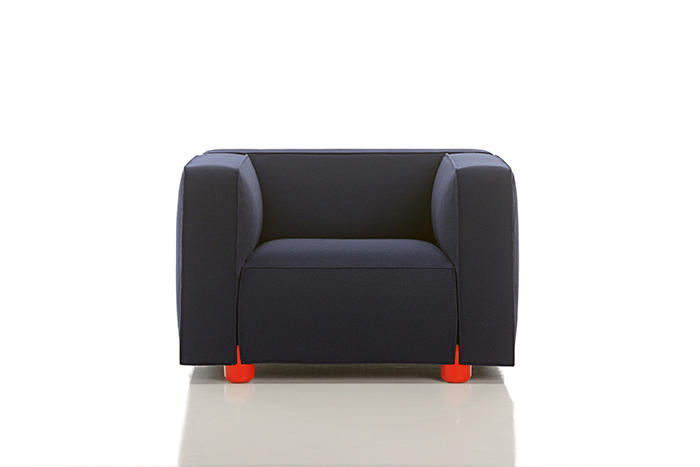
“Architecturally, we wanted to refer to the famous Florence Knoll Sofa. So we created this architectural, delineated envelope which is also supremely comfortable.”
—Jay Osgerby
The Barber Osgerby Compact Armchair for Knoll, 2014. Photograph by Knoll.
In 2013, Barber and Osgerby debuted their first collaboration with Knoll at Salone Internazionale del Mobile di Milano, before introducing the collection to the market the following year. Inspired by Florence Knoll’s iconic sofa—which, in turn, borrowed the aesthetic vocabulary of Ludwig Mies van der Rohe’s—Barber and Osgerby began the design process by considering the chair as an architectural object, “Architecturally, we wanted to refer to the famous Florence Knoll Sofa. So we created this architectural, delineated envelope which is also supremely comfortable.” The chairs’ t-shaped legs are both a source of structure and support, fitting between the joints of the cushions to serve the dual purpose of foot and connector. The result is a seamless design that does away with the frame, creating the appearance of a wholly integrated piece of furniture. For this reason, Osgerby contends, “The foot is really the icon of the sofa. It fits between each one of the arms and the seats, which are the architectural building blocks of the sofa."
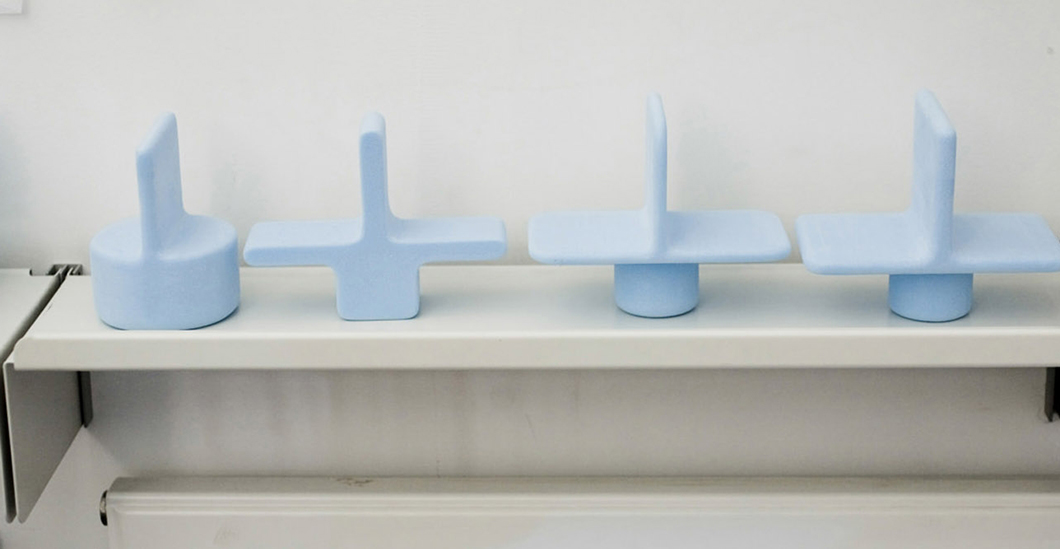
Mold for the foot of the Barber Osgerby Lounge Collection. Courtesy of Barber Osgerby.
Among the many accolades that have been granted to the firm, Barber Osgerby has been the recipient of the Jerwood Applied Arts Prize, the Red Dot Award, and the World Technology Award. The duo’s work is held in permanent collections around the world including the V&A Museum, London; New York’s Metropolitan Museum of Art; London’s Design Museum; and the Art Institute of Chicago. In addition to the running their eponymous design firm, Barber and Osgerby founded the strategic consulting firm Universal Design Studio in 2012, now recognized as one of the most innovative and creative design consultancies in the world. MAP is the 2013 follow-up to Universal Design Studio, and specializes in strategy-based industrial design solutions.





















